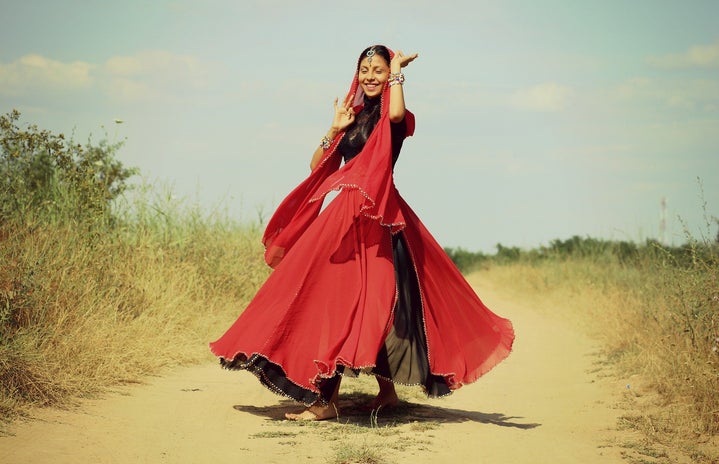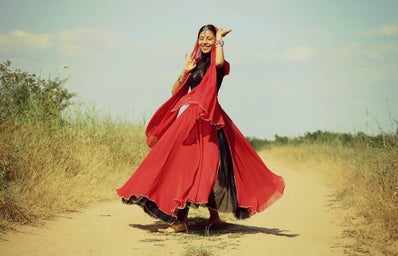A little while back, Coke Studio Bharat released the music video for “Aaj Biraj mein Holi re Rasiya“, and I couldn’t help but wonder about the enthralling experience of celebrating Holi with loved ones, especially in the Braj region of Uttar Pradesh where the festival is popularly celebrated. As the vibrant colors of spring bloom across India, there’s one festival that stands out for its exuberance and cultural significance – Holi. As per the Hindu Calendar, it is the last festival of the year. The festival is all about the celebration of colors and joy. It is associated with several ancient traditions and stories. In Hinduism, Holi has varied meanings and is linked to different aspects of life. Over time, the festival has evolved. Initially, it had a more traditional and religious significance, but with time, it also acquired a philosophical connotation.
In literal terms, ‘Holi‘ refers to burning. It is linked to a legend about King Hiranyakashipu. The king wanted to avenge Lord Vishnu, but his youngest son, Prahalad, was a devout devotee of the God. The king tried to kill Prahalad but failed. He then enlisted the help of his sister Holika, but she was reduced to ashes, and Prahalad remained unharmed. This event is known as Holika Dahan, which signifies the triumph of good over evil. People celebrate it by lighting bonfires the night before Holi, to celebrate the goodness of life and enlighten themselves about right and wrong.
According to Hindu beliefs, there is always a story related to every celebration and ritual. It can also be seen as a time when we symbolically remove negativity from our lives by burning a pyre of Holi. According to Hindu scriptures, Holi is also associated with the practices of Yajna (a type of oblation offered in fire). The word ‘Holi’ originates from the Sanskrit word Holaka. Here, ‘hu’ means ‘to offer’. This offering could be to any deity in the form of yajna. Meanwhile, Holaka refers to ‘that which receives oblations,’ referring to the bonfire lit during Holi.
The festival of Holi is celebrated according to the Vikram Samvat Hindu Calendar on Purnima (the last full moon day of the year) in the month of Falgun (mid-February to mid-March). Although there are numerous references to Holi in our ancient texts, I will focus on analyzing a few well-known stories that hold significance in contemporary times. The times might have evolved, but the beauty of this festival lies in its vigor and enthusiasm. On this day, irrespective of one’s religion, caste, linguistic, or regional differences, everyone celebrates this festival with a feeling of togetherness, happiness, and zest. Those sparkling eyes, colorfully unrecognizable faces, playful dances, and delicacies- gujiyas and thandais (cold milkshakes)- are almost impossible to resist!
This festival is celebrated with great enthusiasm in the northern part of the Indian subcontinent, especially in Braj. This region includes a stretch of places like Mathura, Vrindavan, Barsan, and Nandagon. Unlike other parts of India where Holi is celebrated for a few days, in Braj, it is celebrated for more than 40 days!
The saga of Radha and Krishna love:
In Hindu texts, the love story of Radha and Krishna is significant to Holi. According to the texts, Lord Krishna and Goddess Radha of Dwapara Yuga started this festival. It begins on the first day of Basant Panchami and ends two days after the Holika Dahan in Braj Bhoomi (it is regarded to be Lord Krishna’s birthplace). In Samaaj Gaayan, people sing Holi songs to the tunes of dhap (an instrument that is played during the singing sessions). Braj Bhoomi is renowned for the Rasleelas (the dance of the Supreme God with Radha and his female cowherds) of Krishna, making it a symbol of divine love and celebration. It is a high level of spiritual experience that is even recreated by artists and performers. It sends out a strong message of spirituality and celebration where Radha and Krishna are a swaroop (or form), depicting divine manifestation.
Eight days before Holi, Radha Rani’s village Barsana sends an invitation of Faag to Krishna’s Nandagaon. The sakhiyaan (friends) of Barsana invite Lord Krishna to play Holi while dancing and singing in Nandabhavan. In Dwapara Yuga, Shri Krishna accepted the invitation and sent his friends to Barsaana. Radha Rani’s friends welcomed them with laddoos.
In Vrindavan, Holi celebrations span over five days, with lakhs of devotees gracing for the parikrama (a clockwise circumambulation of sacred entities or holy places). The temples are painted with gulaal (holi colors). In Radha Vallabh temple of Vrindavan, songs of Holi are sung in the evening. The dancers perform in traditional costumes.
The Baldev Dauji Huranga celebration marks the end of Braj Holi. During the Huranga, men, and women of the Pandey Community play with huranga (colors made from quintals of tesu flowers). In the temple courtyard, rose petals are showered from the roof and Abir Gulaal is thrown across Braj through the machines.
unique stories And a form of enlightenment
There are countless amusing tales of Lord Krishna and Radha. These stories are considered to be immortal, just like their divine love. Their teachings form an essential part of devotees’ lives. The celebration of Holi revolves around various stories related to them, reminding us how love and friendship can be embraced in every possible way. As a Krishna and Radha devotee, I visit Braj almost every month. Drawing from my experience, I can guarantee that it is a magnificent moment worth experiencing. You will witness massive crowds waiting in long queues just to have a glimpse of their beloved God. Braj Holi indeed unites everyone across cultures, traditions, and ages!


